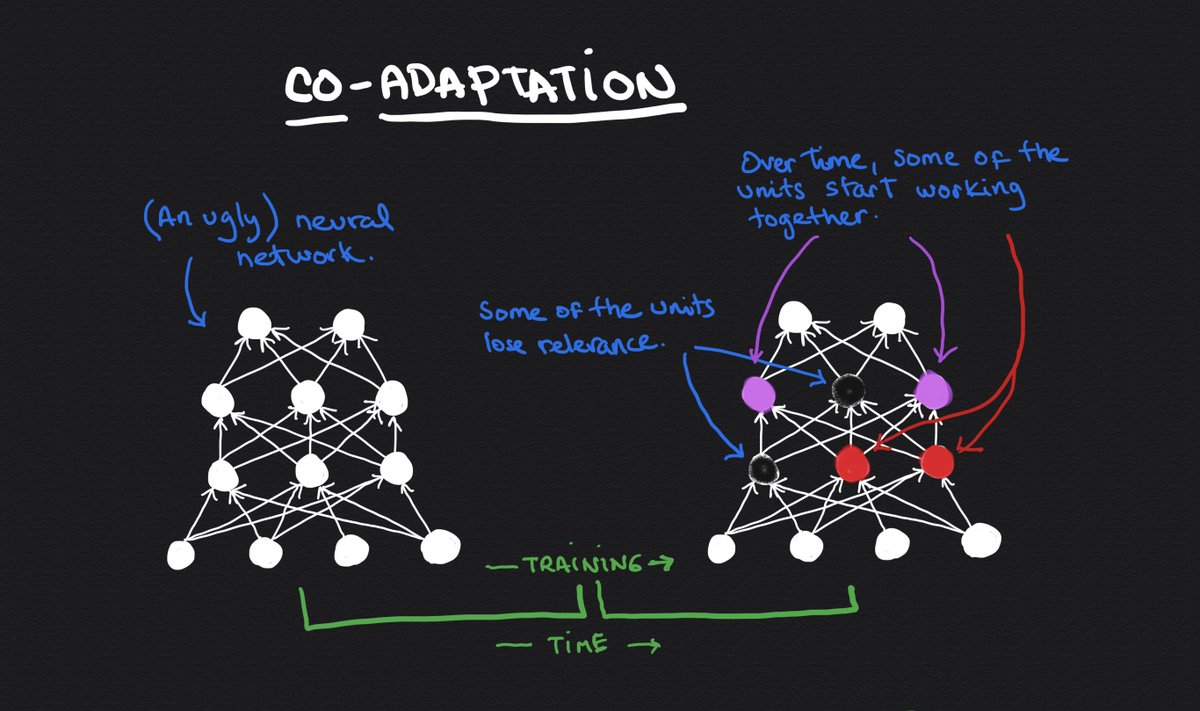
Machine Learning doesn't need to be overwhelming.
Here is a strategy that you can use to get started without too many distractions.
🧵👇
Here is a strategy that you can use to get started without too many distractions.
🧵👇
If you start today, you'll probably feel overwhelmed by how much —apparently— you need to understand.
But it doesn't need to be like that.
You can take a much more practical approach to learn what you need and start providing value right away.
👇
But it doesn't need to be like that.
You can take a much more practical approach to learn what you need and start providing value right away.
👇
Instead of starting "from the beginning," you can hack your way "from within."
The idea is simple:
1. Pick a simple problem —or an area— that's interesting to you.
2. Take the necessary steps to learn how to solve that problem.
3. Keep adding complexity as you see fit.
👇
The idea is simple:
1. Pick a simple problem —or an area— that's interesting to you.
2. Take the necessary steps to learn how to solve that problem.
3. Keep adding complexity as you see fit.
👇
A "simple problem" always starts with some data.
Look around your organization, and they are likely collecting some data already.
(Even accessing Google Analytics data is a great start!)
👇
Look around your organization, and they are likely collecting some data already.
(Even accessing Google Analytics data is a great start!)
👇
Once you get the data, you want to start asking questions about it.
I got started with the check data of customers of a restaurant.
I decided to answer questions like this: "What did those who bought a beer have for dinner?"
👇
I got started with the check data of customers of a restaurant.
I decided to answer questions like this: "What did those who bought a beer have for dinner?"
👇
Answering that question led to even more interesting questions.
It also put me on a path to start learning and proving value since the very first day!
👇
It also put me on a path to start learning and proving value since the very first day!
👇
Here are some other interesting questions I worked on:
▫️ What's the preferred beer for those who bought burgers?
▫️ Who spends more? Those who buy appetizers or those who don't?
▫️ What's the single appetizer that leads to a larger spend?
👇
▫️ What's the preferred beer for those who bought burgers?
▫️ Who spends more? Those who buy appetizers or those who don't?
▫️ What's the single appetizer that leads to a larger spend?
👇
Unless you have access to some data already, starting with a valuable problem will be a little bit hard.
You can always tackle a toy exercise, but finding the right one is not always easy.
If you are stuck, consider focusing on a specific area instead.
👇
You can always tackle a toy exercise, but finding the right one is not always easy.
If you are stuck, consider focusing on a specific area instead.
👇
Here are a few areas that you can choose to get started:
▫️ Defecting defects using pictures
▫️ Answering questions automatically
▫️ Detecting specific objects in a picture
▫️ Forecasting your financial position
▫️ Recommending products based on purchases
👇
▫️ Defecting defects using pictures
▫️ Answering questions automatically
▫️ Detecting specific objects in a picture
▫️ Forecasting your financial position
▫️ Recommending products based on purchases
👇
Narrowing your focus to a specific area will help direct your attention to what's really important.
Remember:
You want to add knowledge in a very intentional manner. One step at a time, as it's needed to move forward.
👇
Remember:
You want to add knowledge in a very intentional manner. One step at a time, as it's needed to move forward.
👇
And, of course, there's nothing wrong with the traditional top-down approach.
Or with any other way you decide to follow.
The only important thing is that you stay consistent and keep providing value!
Or with any other way you decide to follow.
The only important thing is that you stay consistent and keep providing value!
• • •
Missing some Tweet in this thread? You can try to
force a refresh




